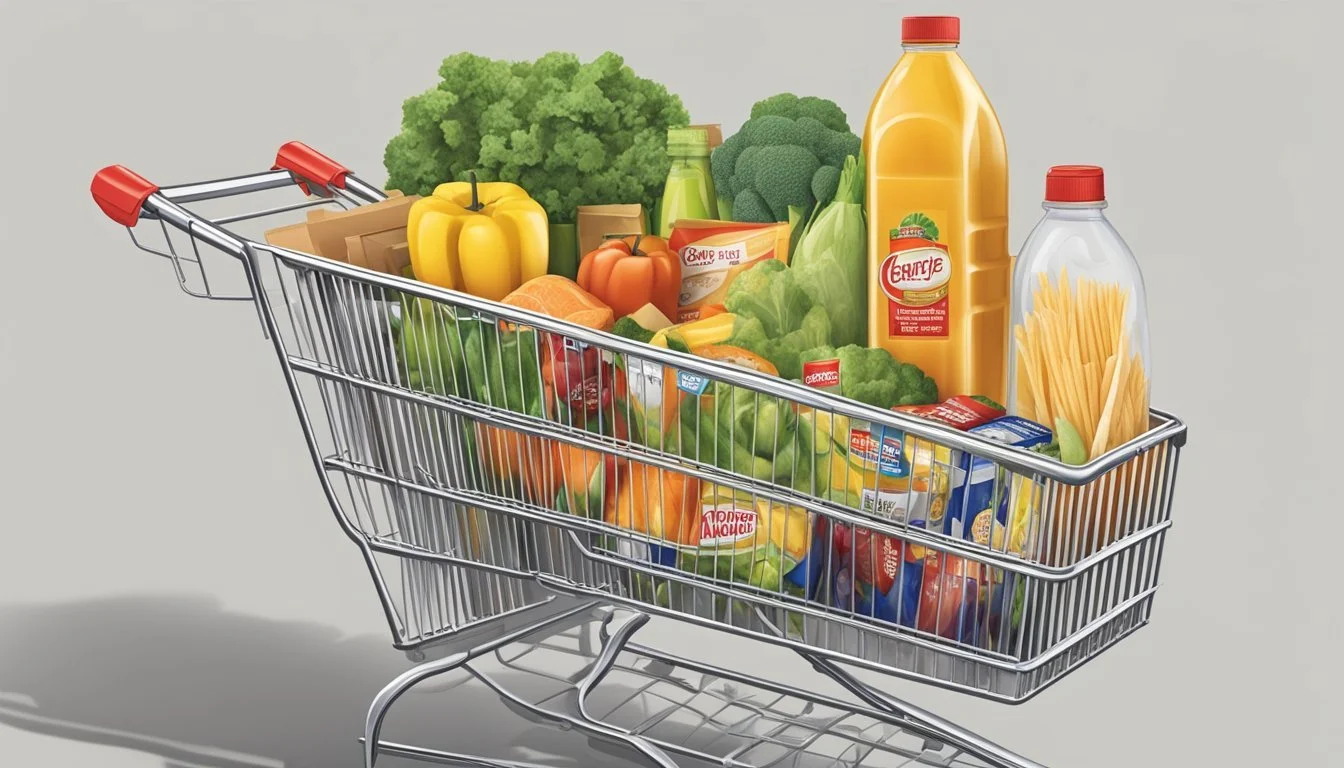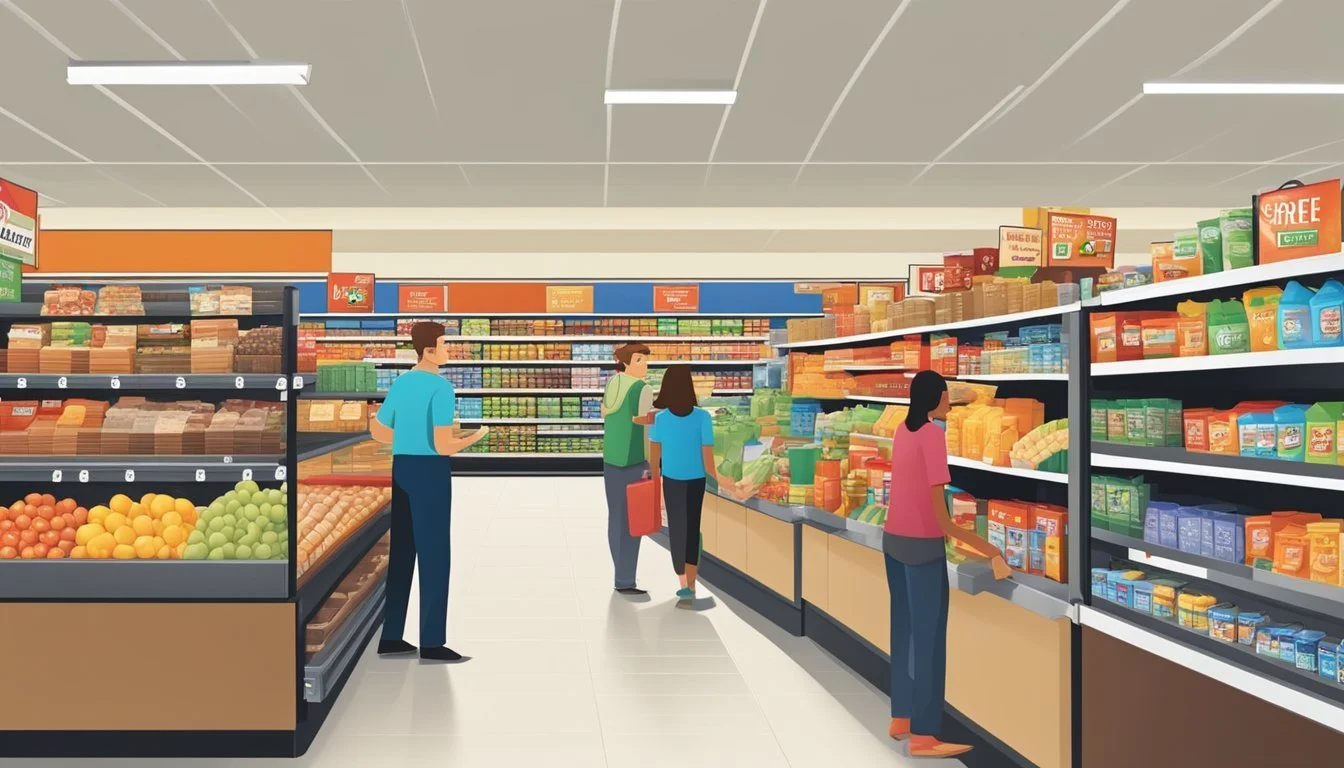Is Safeway Cheaper Than H-E-B?
Comparing Grocery Prices
Part of Our Grocery Store Guide with Details on Safeway Prices and H-E-B Prices
When comparing grocery stores, shoppers often consider factors such as pricing, product variety, and overall shopping experience. Safeway, a well-established grocery chain, is known for its wide range of products and services. However, its reputation for higher prices often comes into question when lined up against regional favorites such as H-E-B, a Texas-based grocery chain celebrated for its customer satisfaction and competitive prices.
H-E-B has gained accolades for providing a superior shopping experience while maintaining affordability. Analysis suggests that H-E-B frequently offers better value for similar products when compared to Safeway. Customers who prioritize budget-friendly shopping along with a diverse selection tend to lean towards stores like H-E-B, which manage to strike a balance between cost and quality.
On the other hand, Safeway's prices reflect its brand partnerships, exclusive offerings, and additional services that might justify a higher cost for some shoppers. The difference in pricing strategies between Safeway and H-E-B is indicative of their respective market positioning. While Safeway might appeal to those seeking specific brands or services, H-E-B's appeal lies in its ability to provide a cost-effective and satisfactory grocery shopping experience.
Overview of Safeway and H-E-B
In the competitive landscape of grocery chains, Safeway and H-E-B stand out for their significant history and distinctive brand reputations within the grocery store sector.
History and Presence
Safeway, established in 1915, has grown to become a prominent grocery chain across the United States. Known for its wide reach, the brand was acquired by Albertsons in 2015, further expanding its footprint. Safeway operates mainly in the western and central parts of the U.S., providing an array of grocery items, pharmacy services, and specialty departments to its customers.
H-E-B, a name synonymous with Texas groceries, began its journey in 1905. This grocery chain established a strong foothold in the Lone Star State and northern Mexico. With its reputation for local flavors and products, H-E-B has developed a loyal customer base. Unlike Safeway, H-E-B is a privately held company and has remained regional, focusing primarily on Texas and its surrounding areas.
Brand Perception
Safeway positions itself as a convenient one-stop shop, often perceived as pricier than some competitors like Walmart, WinCo, or Costco. Its commitment to quality and customer service is a defining feature, but this sometimes results in higher prices compared to budget-friendly stores.
Conversely, H-E-B is known for its attention to local preferences, competitive pricing, and community involvement, factors that elevate its status among Texas residents. It frequently competes with national chains such as Kroger and Whole Foods but retains a strong market share due to its Texas-centric approach. H-E-B's ability to offer a personalized shopping experience has consistently bolstered its image as a favored local grocer.
Price Comparison Factors
When considering whether Safeway is cheaper than H-E-B, various factors come into play that can affect the end price paid by the consumer. These include base price metrics, the impact of sales and discounts, membership and rewards programs, and available coupons and promotions.
Base Price Metrics
Safeway and H-E-B have different pricing strategies. Base price refers to the standard cost of items before any discounts or incentives. Consumers should compare the shelf prices of identical or similar products across both stores. Price tags often list a per-unit cost which helps in assessing which store offers a lower base price for the same volume or weight.
Discounts and Sales
Regular sales can significantly reduce the total cost of groceries. Safeway and H-E-B both run weekly sales, which can lead to substantial savings on certain products. Shoppers should monitor sale prices, as items can fluctuate between more and less expensive than the competitor depending on the current sale.
Membership and Rewards
Both Safeway and H-E-B offer membership programs that can influence the total price paid. Members at Safeway can access Just for U rewards, which provide personalized deals and discounts. H-E-B does not have a traditional membership program but offers savings through in-store promotions. The value of rewards should be factored into overall price comparisons.
Coupons and Promotions
Coupons and other promotions are a significant determinant of final pricing. Safeway and H-E-B both accept manufacturer and store-specific coupons, which can be stacked with existing sales to reduce prices further. Consumers should consider the availability and terms of coupons when comparing prices, as they can sometimes turn a higher base priced item into a better deal.
Product Assortment and Availability
When comparing the product assortment and availability at Safeway and H-E-B, one can expect a difference in the range of products each store offers throughout various departments, from produce to household necessities.
Produce Quality and Variety
Safeway offers a wide array of fresh produce, including seasonal fruits and veggies. Customers have reported that the quality and variety of organic and conventional produce at Safeway can be quite extensive. On the other hand, H-E-B is known for its fresh, locally sourced produce, featuring a robust selection of Texas-grown items.
Meat and Dairy Selection
The meat and dairy sections at both Safeway and H-E-B are well-stocked with a variety of choices. H-E-B particularly excels with its meat selection, offering a range of quality cuts, with an emphasis on local and organic options. Safeway provides a comprehensive assortment of meat and dairy products as well, including a selection of premium, organic, and grass-fed options.
Organic and Specialty Foods
Both grocery chains have made commendable efforts to expand their organic and specialty food offerings. Safeway showcases an impressive range of organic products, including dairy and dry goods. H-E-B matches this commitment, especially with its own line of organic and specialty products, which cater to health-conscious consumers and those with dietary restrictions.
Household Necessities
In terms of household necessities, both Safeway and H-E-B provide a broad range of products. This extends from bakery items and deli/meats to dry goods and shelf-stable items. Customers can find everything needed for daily living, with H-E-B often focusing on bulk-buy and value options, while Safeway tends to include more exclusive brands in their inventory.
Consumer Shopping Experience
When comparing Safeway and H-E-B, one must consider the shopping experience including store layout, customer service, and online offerings. These factors significantly influence a customer's preference and loyalty towards a grocery store.
Store Layout and Design
Safeway stores typically offer a well-organized layout with clear signage, making it easy for shoppers to find what they need. Aisles are spacious, and the stores often feature sections dedicated to specialty foods and organic products. H-E-B, on the other hand, often integrates a Texas flair within their layout and design, providing a localized shopping experience that resonates with their customer base. Both stores place a high value on cleanliness and aesthetic presentation, which enhances the overall shopping environment.
Customer Service and Support
Customer service is a critical aspect of the grocery shopping experience. Safeway generally provides a range of services including dedicated customer support desks for assistance and a variety of payment options, including major credit cards and Safeway's own store cards. H-E-B prides itself on friendly and helpful staff, often going above and beyond to assist customers with grocery selections and locating items. Both stores offer special shopping tips and recipes that further enrich the consumer's visit.
Online Shopping and Delivery
In the realm of online shopping and delivery, both Safeway and H-E-B offer convenient options. Safeway has a partnership with third-party delivery services, providing flexibility and convenience for customers who prefer online shopping. They also offer same-day delivery for those who need their groceries swiftly. H-E-B has an efficient online platform for customers to shop digitally, with curbside pickup and home delivery options that cater to their customer's convenience. The online services for both stores often come with membership or subscription options that can offer value for frequent users.
Cost-Effectiveness for Shoppers
When comparing Safeway and H-E-B, shoppers often consider factors such as budget-friendly options, bulk buying, and grocery list planning to determine which store offers the best value and can help in reducing the overall grocery bill.
Budget-Friendly Shopping
Safeway and H-E-B both offer a variety of store brands and discounted items that can help shoppers adhere to a tight grocery budget. H-E-B, in particular, is known for its competitive prices and frequent promotions, which can be a significant advantage for cost-conscious consumers. They might find that their dollar stretches further at H-E-B when purchasing everyday essentials.
Bulk Buying Options
Both grocery chains offer bulk buying options, but the cost savings can vary. Bulk sections are designed for shoppers looking to buy larger quantities, which can lead to a lower cost per unit and significant savings over time. H-E-B's bulk options are often praised for their variety and value, and it may provide shoppers with a greater opportunity to stock up and save on bulk items compared to Safeway.
Grocery List Planning
Effective grocery list planning can lead to more strategic shopping trips and better savings at both Safeway and H-E-B. Shoppers who create a meal plan and stick to a well-thought-out grocery list are less likely to make impulsive purchases, thereby keeping their grocery bill in check. H-E-B offers meal planning solutions and recipes that can help shoppers purchase only what they need, potentially leading to a healthier and cheaper shopping experience.
Comparative Market Analysis
The following comparative market analysis examines the pricing structure of Safeway relative to H-E-B while considering broader market trends and consumer demands that influence their pricing strategies.
Competitor Pricing
In examining competitor pricing, it’s crucial to look at how Safeway stands against H-E-B as well as other key players in the grocery sector. Walmart is renowned for its aggressive pricing, often cited as offering the best overall value. Kroger, operating in a similar space as Safeway, implements a low-cost strategy to offer competitive prices. It’s important to note Whole Foods, while under the umbrella of Amazon, typically targets a higher-priced market niche. On the other hand, Aldi and Grocery Outlet are known for their deep-discount strategies that could potentially undercut Safeway's pricing.
Considering warehouse clubs, Costco ranks as a significant competitor with a membership model that offers bulk products at lower prices. On a smaller scale, Trader Joe’s and Market Basket have dedicated consumer bases due to their unique offerings and competitive pricing.
Safeway’s private label brand, Lucerne, is an essential part of their strategy, potentially offering better value in comparison to national brands. Integrating findings from consumer analytics firms like dunnhumby can further refine Safeway's pricing tactics against competitors like H-E-B.
Market Trends and Consumer Demands
Market trends show that families are increasingly seeking affordability without compromising on quality. As a reaction, many retailers are angling their product assortment to meet these expectations. Reports by Forbes and other market analysis entities underscore that consumer demands are shifting towards organic and locally-sourced products, often more available at Safeway compared to discount stores.
With the prevalence of online shopping, Safeway is competing with Amazon and Target for the digital consumer market. Yet, brick-and-mortar retailers like Safeway and H-E-B can leverage their physical presence to meet the immediate needs of consumers, offering convenience that goes beyond price comparison.
The analysis observes that the pricing battle amongst grocery chains is not solely based on sticker price but also on optimizing the consumer's perceived value, taking into account the methodology of market trends and embracing the emergent consumer demands in the grocery sector.
Practical Tips for Shoppers
When comparing grocery stores like Safeway and H-E-B, shoppers can maximize savings through strategic use of sales and attention to seasonal availability. Here's how to navigate both these aspects for better value.
Effective Use of Deals and Offers
Safeway and H-E-B both offer a variety of deals and offers, but the savvy shopper knows that not all discounts are created equal. At Safeway, one might find exclusive brand partnerships or special services that affect pricing. To make the most of these, shoppers should:
Sign up for loyalty programs to access member-only discounts.
Plan grocery trips around advertised sales, focusing on items with significant price reductions.
Make use of cash-back and coupon apps that are relevant to the items already on their list.
Download store apps like those for Safeway and H-E-B to get digital coupons and personalized deals.
Shopping Seasonally and Locally
Groceries, particularly fresh produce, can vary in price depending on their seasonal availability and local demand. Shoppers can often find the best value in produce that is in season. For groceries like these, it's advisable to:
Buy seasonal vegetables and fruits, which are generally cheaper and fresher.
Look for sales on local products that stores may offer to support regional suppliers.
Check weekly ads for both Safeway and H-E-B to identify which store has the better deals on local and seasonal items.
Consider visiting local farmers' markets for potentially better prices on fresh, local produce as compared to supermarket chains.
Conclusion
When determining whether Safeway or H-E-B offers the lower prices, there are several factors to consider. H-E-B stands out with its Texas-themed branding and has built a strong loyalty among customers with its competitive pricing structure. The company's localized approach and scale of operation allow it to offer goods often at prices that challenge other grocery giants.
Safeway is known to have higher prices on some items, influenced by a variety of factors, including partnerships with high-end brands and services like delivery which can add to the overall cost for consumers. Despite this, Safeway maintains a reputation for quality and service, ensuring its position in the market.
When looking specifically at price comparisons:
H-E-B typically emerges as the more cost-effective option. This is particularly apparent when looking at the larger volume of stores and its presence in the Texas and Mexico markets where it directly caters to local consumers.
Safeway may offer occasional deals and competitive prices on certain products, but it generally trends towards a higher price point overall.
Each grocery store has established their niche, with H-E-B focusing on the balance of price and quality suited to its customer base, and Safeway providing exclusive product ranges and user-centric services at a higher price. Consumers may choose between the two not simply on price alone but based on their specific shopping preferences, brand loyalty, and the value they place on quality and service.






